8 steps to transform your workplace with office lighting (+ checklist)
8 steps towards a brilliant office lighting design makeover
Office lighting design goes beyond merely stopping employees from squinting at their screens; it plays a crucial role in transforming a workspace into a hub of creativity and efficiency. By mastering the blend of ambient, task and accent lighting, you can illuminate your office effectively, catering to the varied needs of different areas and activities.
Here’s our guide to creating a balanced, dynamic lighting plan that makes your office not just visually appealing but a place where productivity thrives in comfort.
Photography by Escandi, Fritz Hansen, Fredericia, Gubi and Muuto
Share
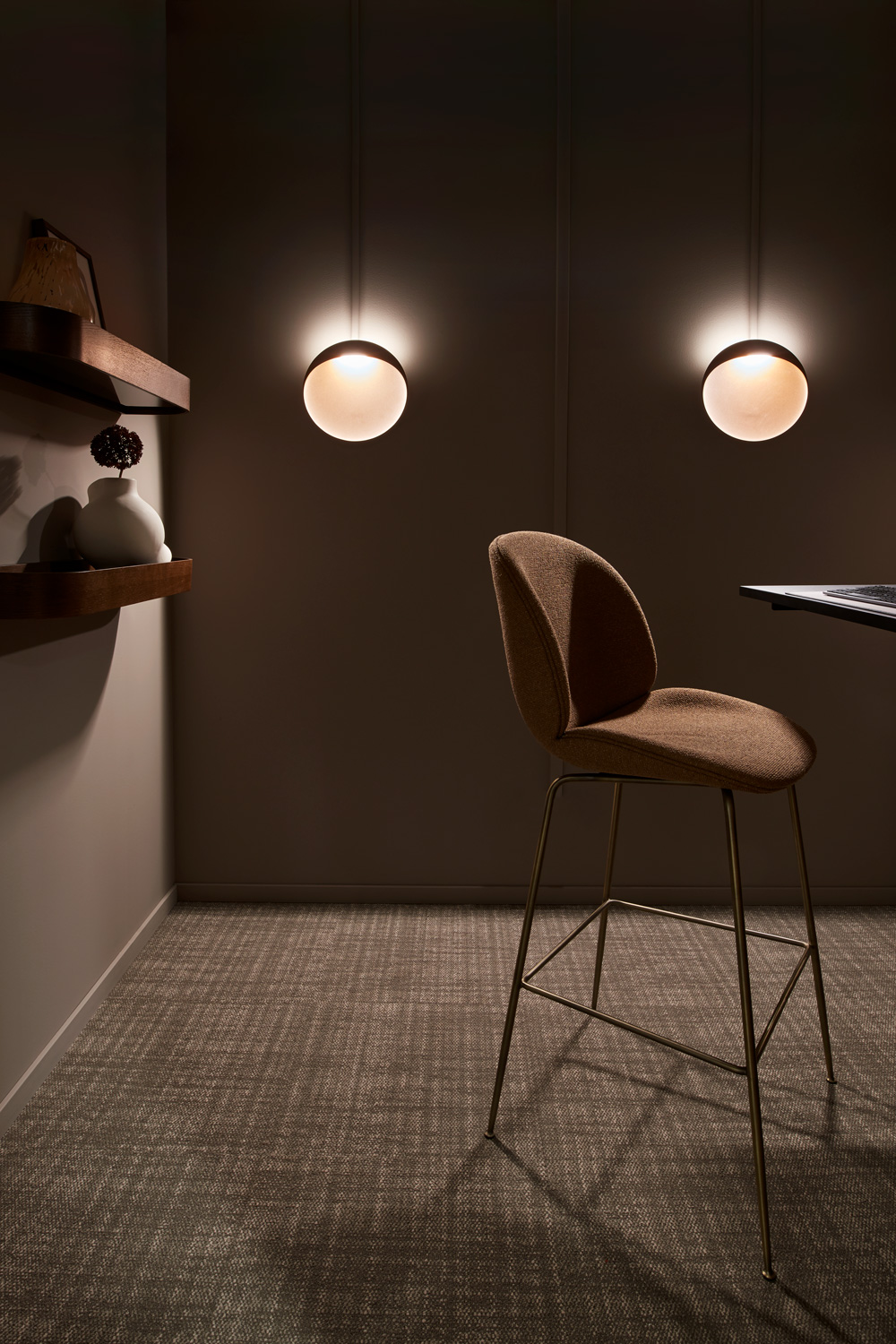
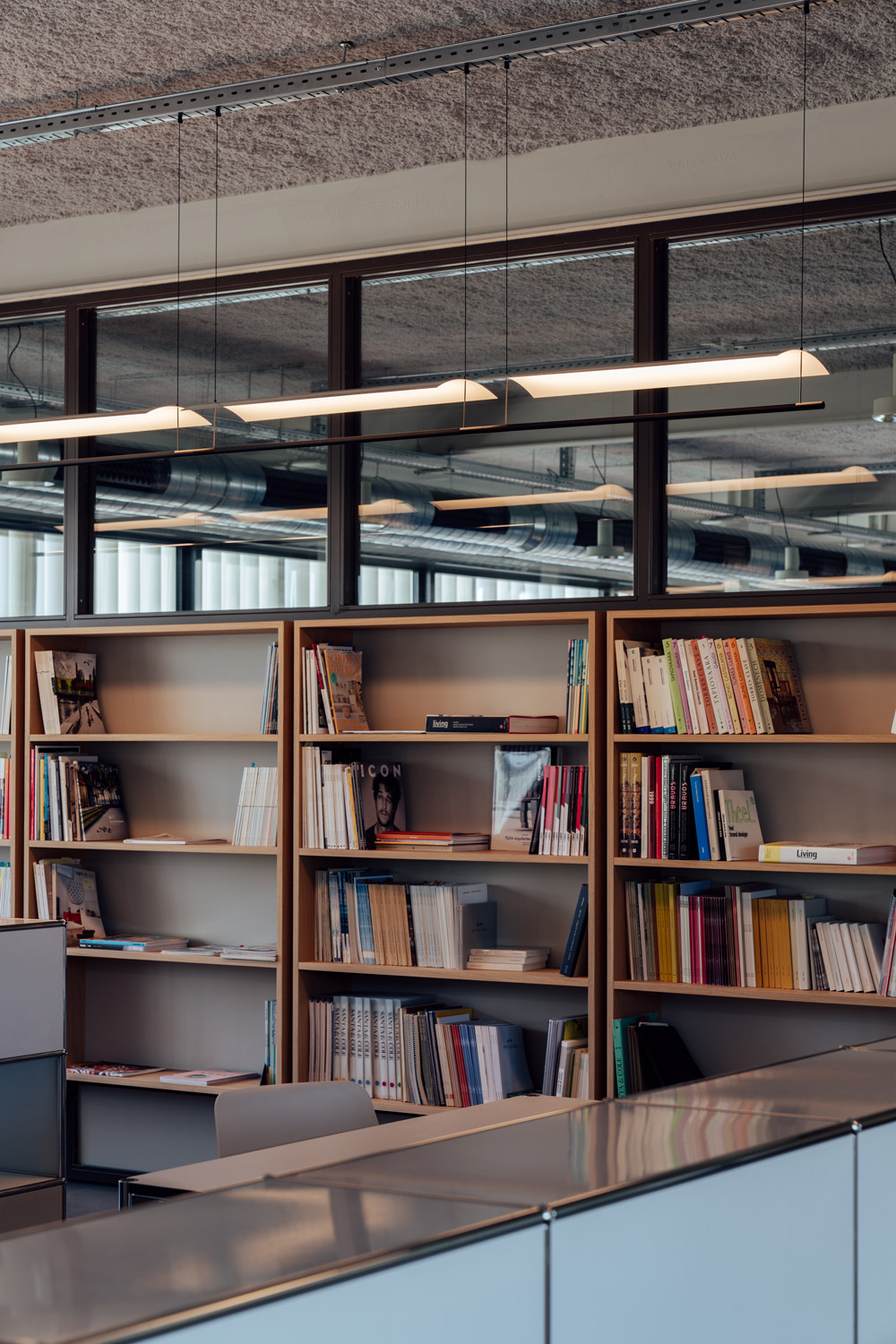
Think of it as a stage play, where every type of lighting has a starring role in turning your office into a hit of productivity and style.
What are the different types of office lighting and what roles do they play?
Now, let’s look at the different types of office lighting. Think of it as a stage play, where every type of lighting has a starring role in turning your office into a hit of productivity and style. There are three main types of lighting that deserve special attention: ambient, task and accent. Each has its own part to play in making sure your office isn’t just another run-of-the-mill workspace.
First up, ambient lighting. This is your office’s main star of lighting if you will. It’s the general lighting that lights up the stage – or in this case, the office. Ambient lighting is all about setting the scene with a comfortable level of brightness, making sure everyone can see where they’re going without needing a torch. It’s usually delivered by those big units on the ceiling, recessed lights or windows. It’s the unsung hero that makes sure your office doesn’t resemble a gloomy winter’s day.
Next in the spotlight is task lighting, always there to add focus and intensity where it’s needed. As the name suggests, it’s all about shining a light on specific tasks. Think of a desk lamp that stops you from squinting at your computer screen or an adjustable floor lamp that lets you pore over documents without straining your eyes. Task lighting is like that trusty sidekick, ready to swoop in and save the day, ensuring everyone can see the finer details of their work.
Last but certainly not least, we have accent lighting, often understated but always adding a touch of elegance. It’s not just there to make the office look pretty (although it does a smashing job of that). It’s about highlighting the office’s best features, be it a piece of art or an architectural detail. Track lights, spotlights or wall-mounted fixtures are often used here. Accent lighting is the finishing touch that takes your office from ’just another workplace’ to a place that oozes character and style.
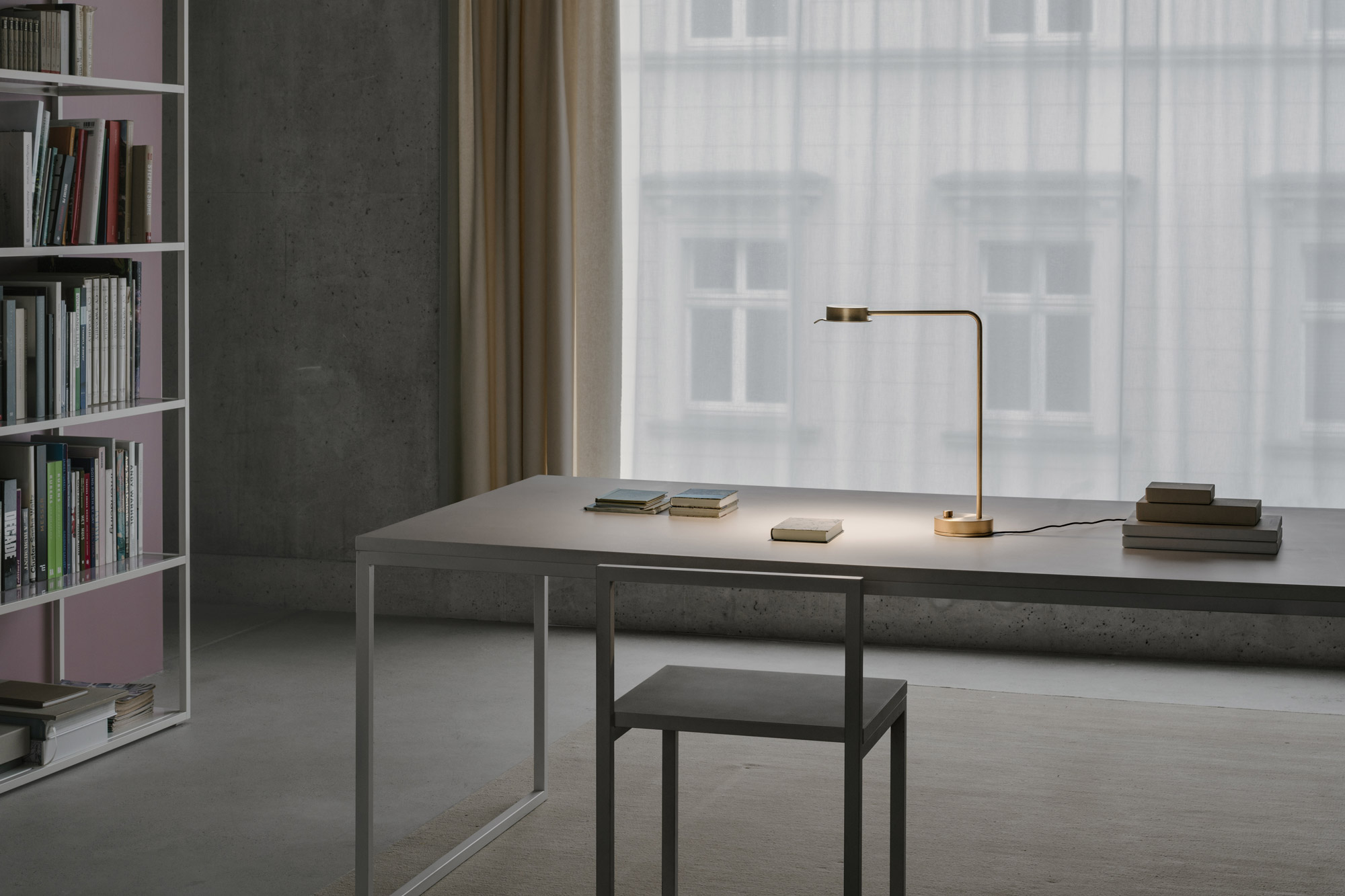
It’s about matching the light to the vibe of the activity.
01. Assess current lighting
Think of assessing your office lighting as a bit like solving a puzzle – intriguing and essential for a brilliant result. First step: take a look around your office. What’s happening with the light? Is it beaming down like a spotlight in some areas, or playing a game of hide-and-seek in others? Notice how the natural light flows in – does it flood the space like a gentle wave or is it more of a trickle in some spots?
Consider the different tasks happening in your office. Those zones buzzing with creativity might need lighting that’s bright and energising, while the areas where focus is king would benefit from softer, more targeted lighting. It’s about matching the light to the vibe of the activity.
And let’s talk about natural light – the unsung hero of the lighting world. It’s not just there to help you cut down on electricity. It’s a mood booster and a health enhancer too. Observe how it dances across your office throughout the day. Are there ways to let more of it in, maybe by rearranging desks or tweaking the window dressings? The aim is to create a harmonious duo between natural and artificial light. You want them to complement each other seamlessly, avoiding glare and ensuring a consistent, comfortable level of brightness. It’s all about finding that sweet spot where the lighting just feels right and keeps the office atmosphere lively and productive.
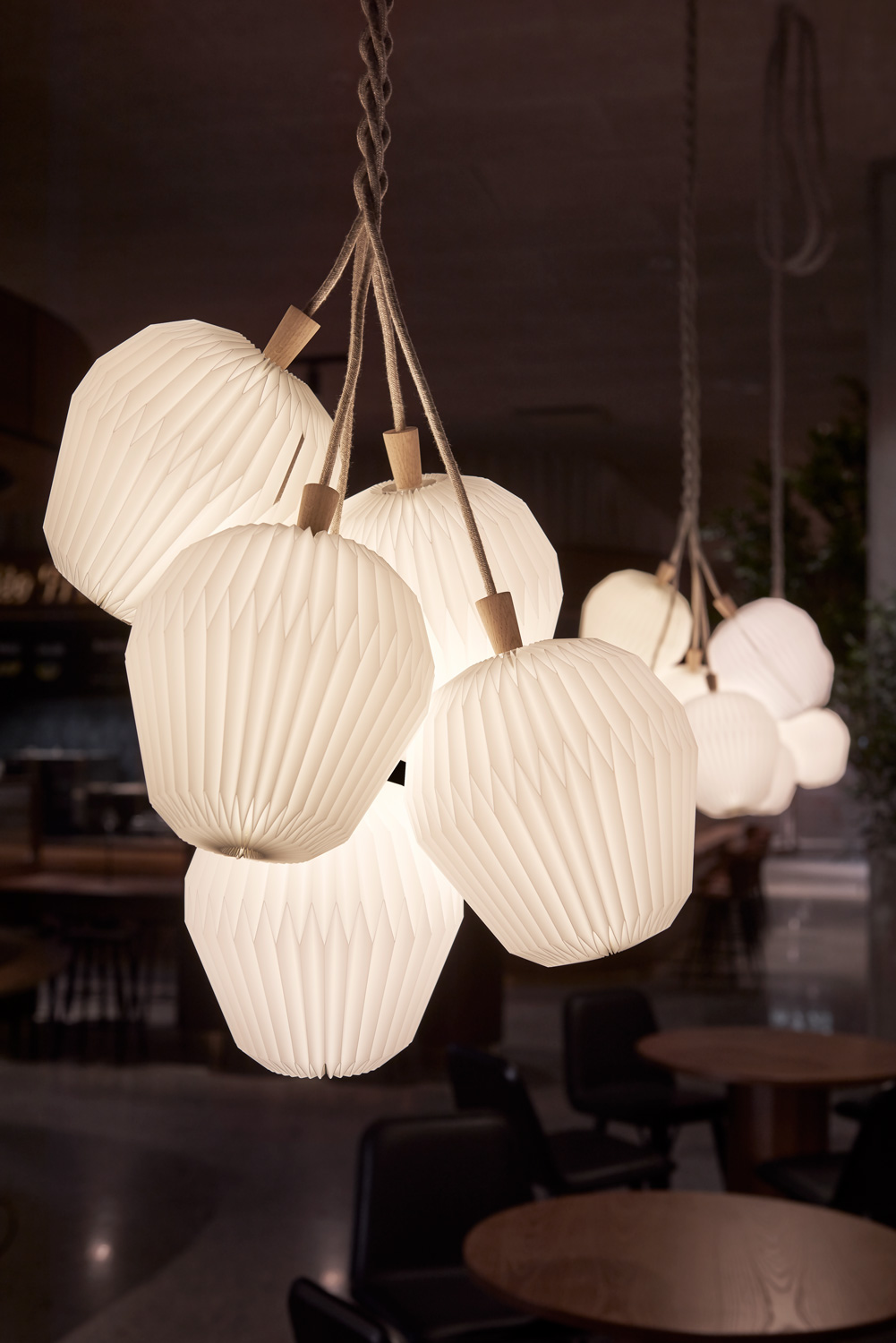
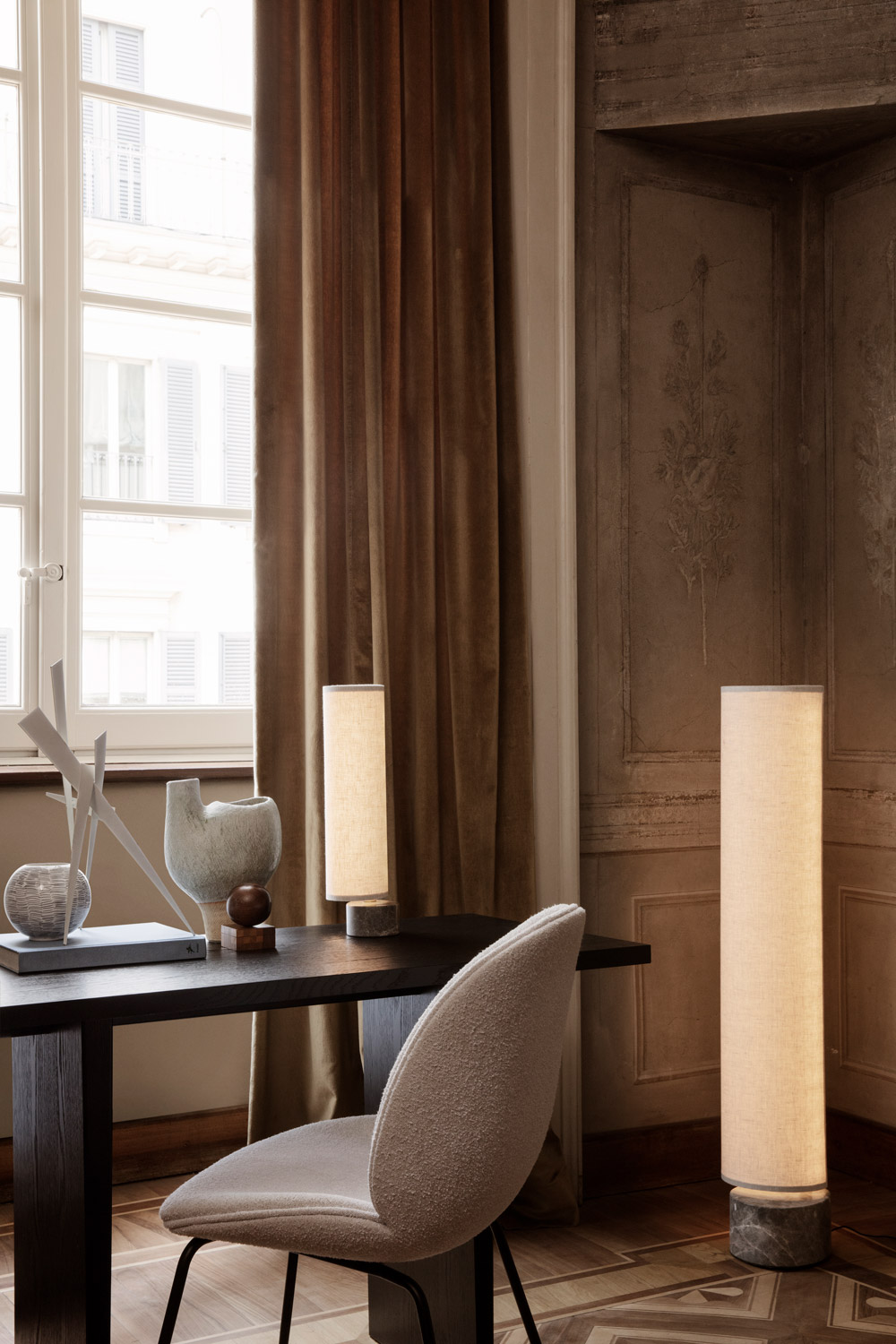
The blueprint serves as a canvas, where each light source is positioned to optimise its impact.
02. Make a lighting plan
This stage involves translating the theoretical aspects of office lighting design into a tangible blueprint for action. By mapping out lighting on an office blueprint, designers and architects can strategically place various light sources to serve the diverse needs of the space effectively.
The blueprint serves as a canvas, where each light source is positioned to optimise its impact – enhancing functionality while minimising potential issues such as glare or uneven lighting. Incorporating lighting into the blueprint from the outset ensures that every aspect of the office’s design is considered, from the natural flow of daylight to the ergonomics of workspaces.
This proactive approach aids in identifying the best fixtures and placements to achieve desired lighting effects, ensuring that the final setup not only meets the practical needs of the office but also enhances its aesthetic appeal and supports the well-being of its occupants.
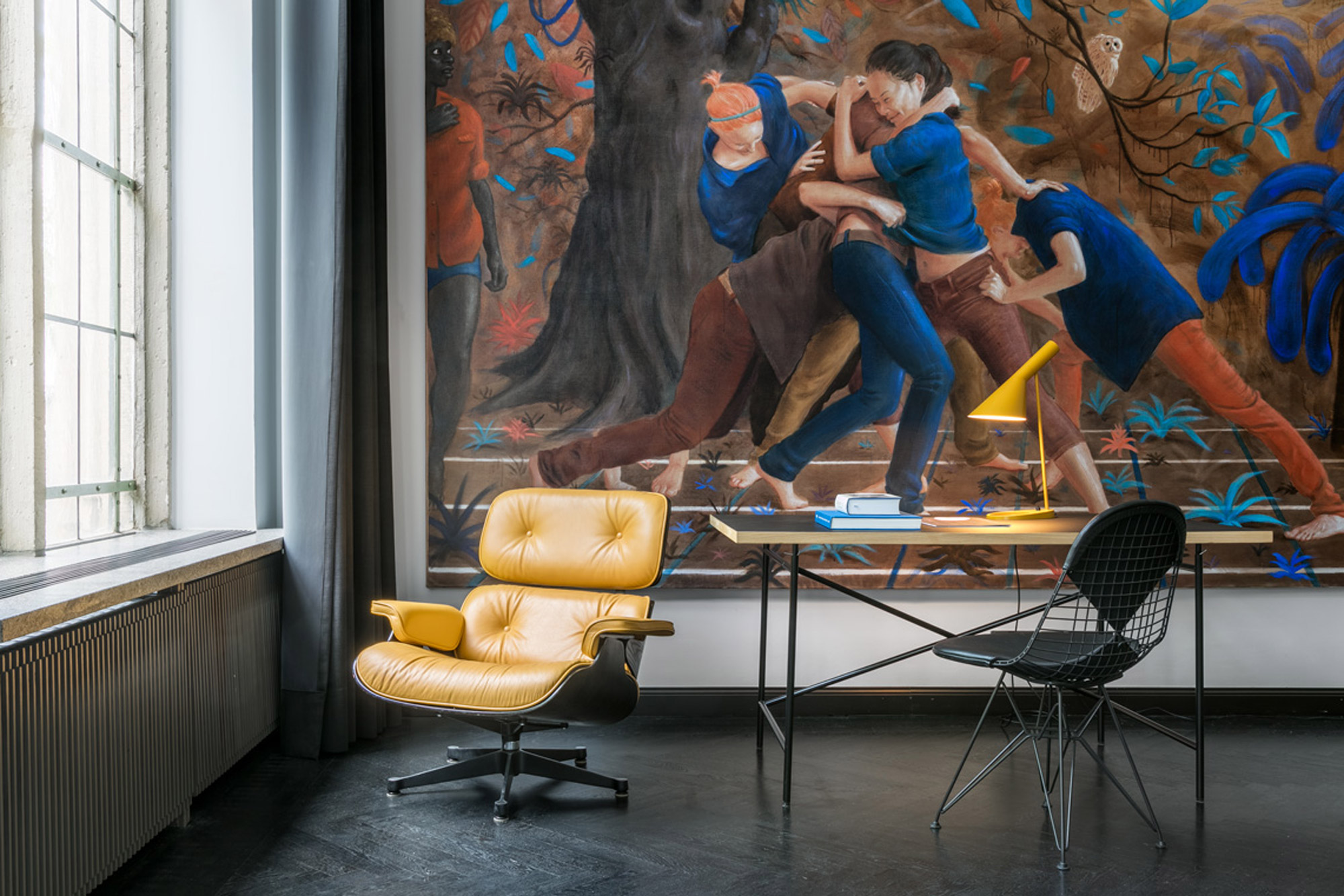
Consider ambient lighting as the foundational layer in your office’s lighting scheme.
03. Design with ambient lighting
Designing an office space isn’t just about picking the right furniture and colour schemes; ambient lighting is a star player in setting the mood and functionality. To harness the power of ambient lighting for a welcoming and productive environment, it’s all about strategic implementation and understanding its role.
Consider ambient lighting as the foundational layer in your office’s lighting scheme. It’s the main source of illumination, setting the stage for everything else. Start by thinking about the intensity and quality of light your space needs. Ceiling fixtures and indirect lighting are great for casting an even glow, avoiding those pesky dark corners and shadows that could lead to eye strain. The colour temperature of your bulbs is another vital factor. Too warm or too cool can swing the mood and affect focus – aim for a balance that feels like natural daylight, creating a comfortable ambience that helps maintain concentration and reduce fatigue.
Tackling glare is another key aspect of designing with ambient light. Glare, that unwelcome intruder, can cause discomfort and is often a result of lights that are too bright or poorly positioned. To keep glare at bay, diffusers can be a great addition to overhead lights. It’s also wise to position lights thoughtfully, avoiding direct reflections on computer screens and shiny surfaces. And let’s not forget about adaptability – incorporating a lighting system that can adjust to different times of the day can be a game changer, keeping the lighting comfortable and effective, no matter the natural light conditions outside.
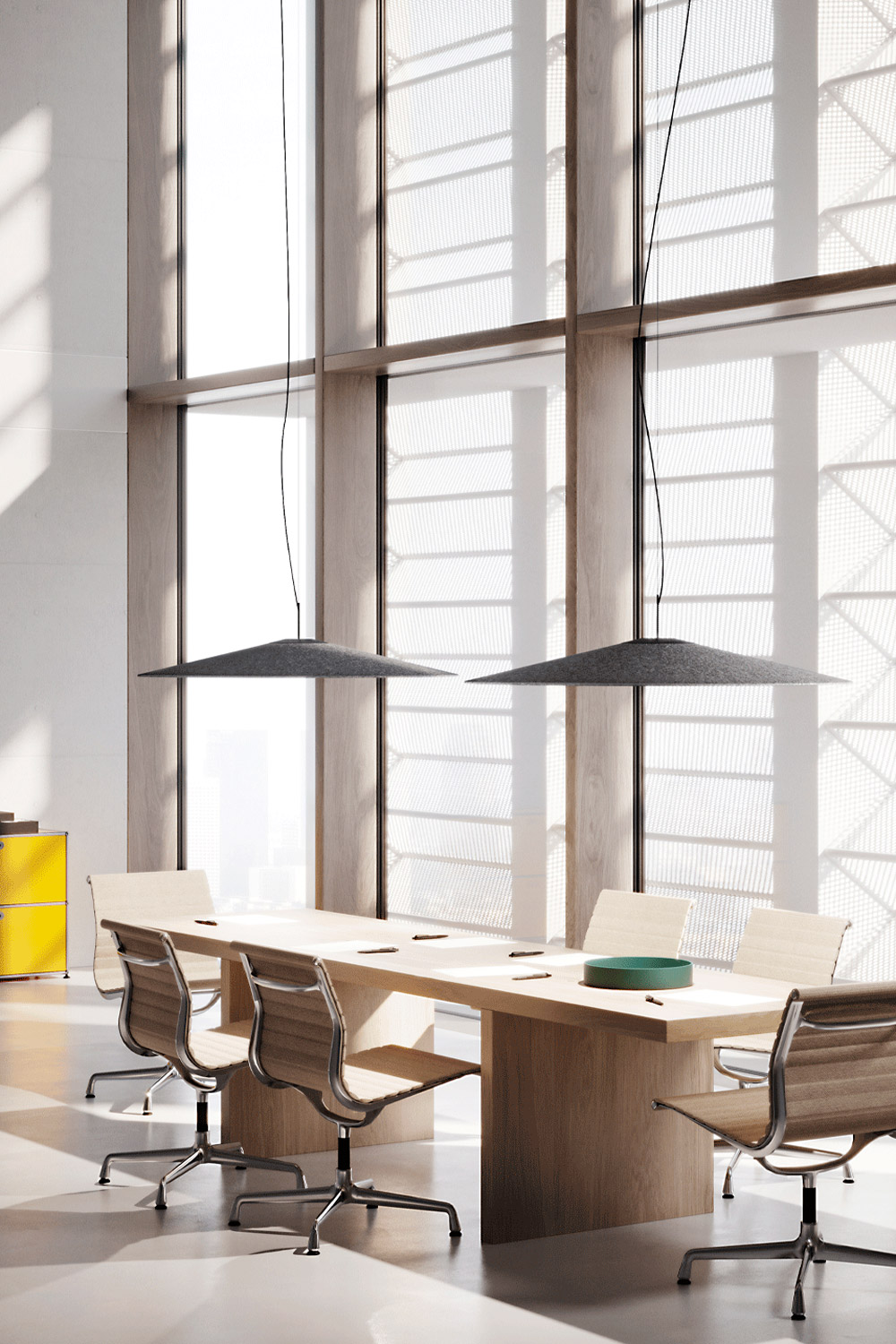
It zeroes in on specific areas to help with detailed tasks …
04. Optimise task lighting
Task lighting in the office is like a trusty sidekick – there to make life easier, improve productivity and save the day (or at least your eyesight). But how do you make the most of this unsung hero? Understanding its role and implementing it effectively can turn a regular workspace into a super-efficient productivity hub.
Think of task lighting as your personal spotlight. It zeroes in on specific areas to help with detailed tasks, making reading, writing or deciphering the mysteries of spreadsheets a breeze. The first step in optimising task lighting is a bit like being a detective – identify the key areas where it’s most needed. These are typically the spots where the magic happens: the intense reading, the meticulous writing or the focused computer work.
Once you’ve pinpointed these hotspots, the next act is choosing the right kind of task light. Desk lamps are a bit like the Swiss Army knives of lighting – versatile, adjustable and reliable. Look for lamps with the flexibility of a gymnast – adjustable arms and heads that let you direct light just where it’s needed, keeping shadows and glare at bay. And let’s talk about brightness and colour temperature – too dim and you’re squinting; too bright and it’s like being interrogated. The goal is to find that perfect zone of just-right lighting.
Positioning your task light is crucial. For the right-handed folks, placing the light on the left reduces hand shadows and the reverse is true for the lefties. And remember, it’s not just about the task light doing its solo performance. It needs to harmonise with the ambient lighting too. It’s all about creating a smooth transition from one lighting level to another, like a well-rehearsed dance, ensuring your eyes don’t go from relaxed to shocked as they move around the room.
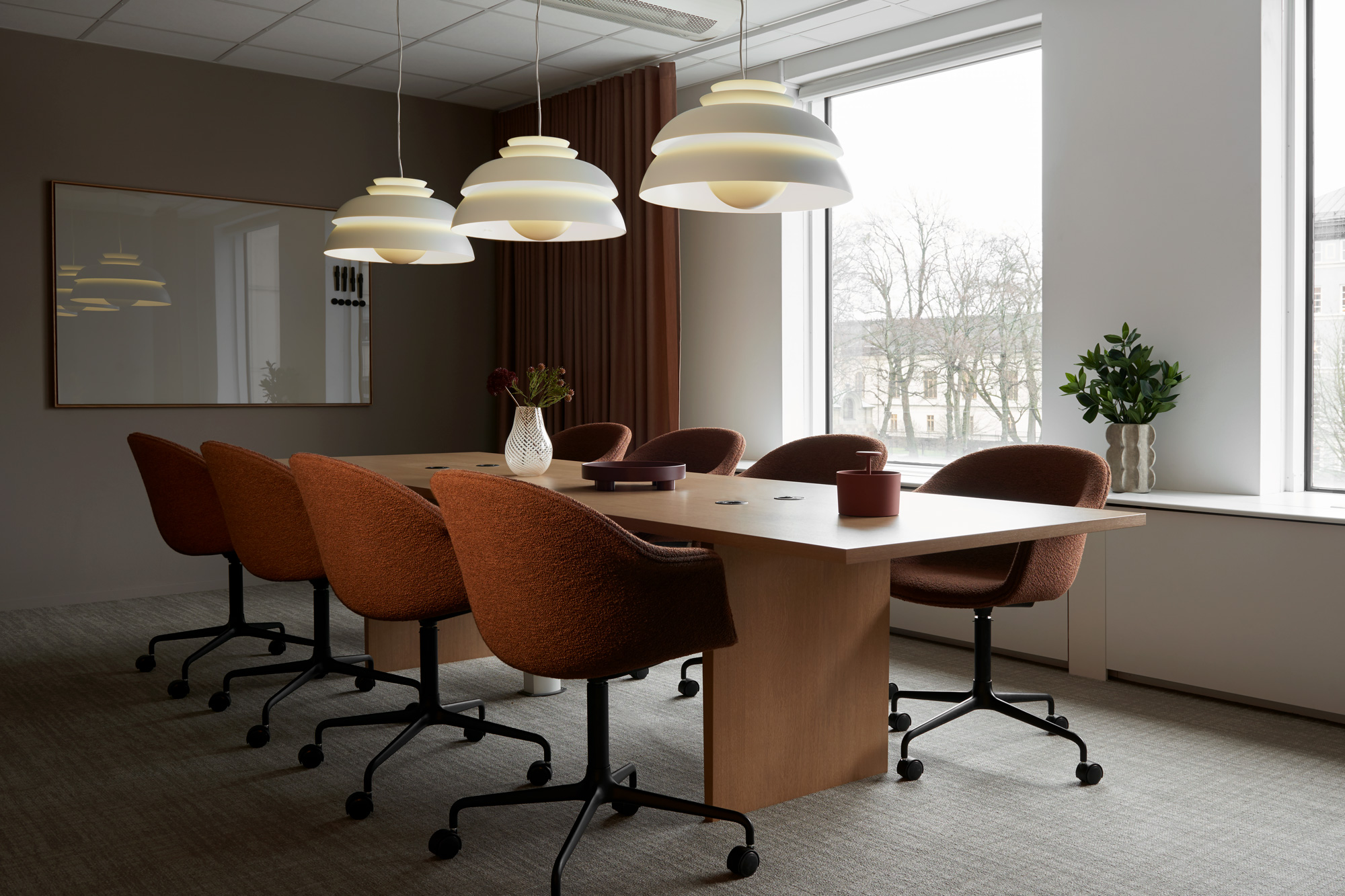
It adds that extra zing, turning the mundane into the magnificent.
05. Enhance with accent lighting
Accent lighting in the office can be a bit like the secret sauce in a recipe – it adds that extra zing, turning the mundane into the magnificent. But how do you use this culinary wizardry of lighting to spice up your workspace? It’s all about understanding its role in not just lighting up a space, but making it sing with style and personality.
Think of accent lighting as your spotlight artist, there to shine a light on the office’s best features. Whether it’s a striking piece of art that sparks conversations, a lush indoor plant that brings a touch of the outdoors inside or those quirky architectural quirks that give your office its character. Using the likes of spotlights, track lighting or wall-mounted fixtures, you can turn these elements into the stars of your office show. Imagine a gorgeous painting bathed in light, suddenly becoming the source of daily inspiration or a cool exposed brick wall getting its moment in the limelight, adding a dash of urban chic to the space.
Now, let’s talk about the right temperature and intensity of your accent lights. It’s a balancing act – like adding just enough seasoning to a dish. The light should be bright enough to highlight, but not so dazzling that it steals the entire show. It’s about complementing, not competing with, the overall lighting design of your office.

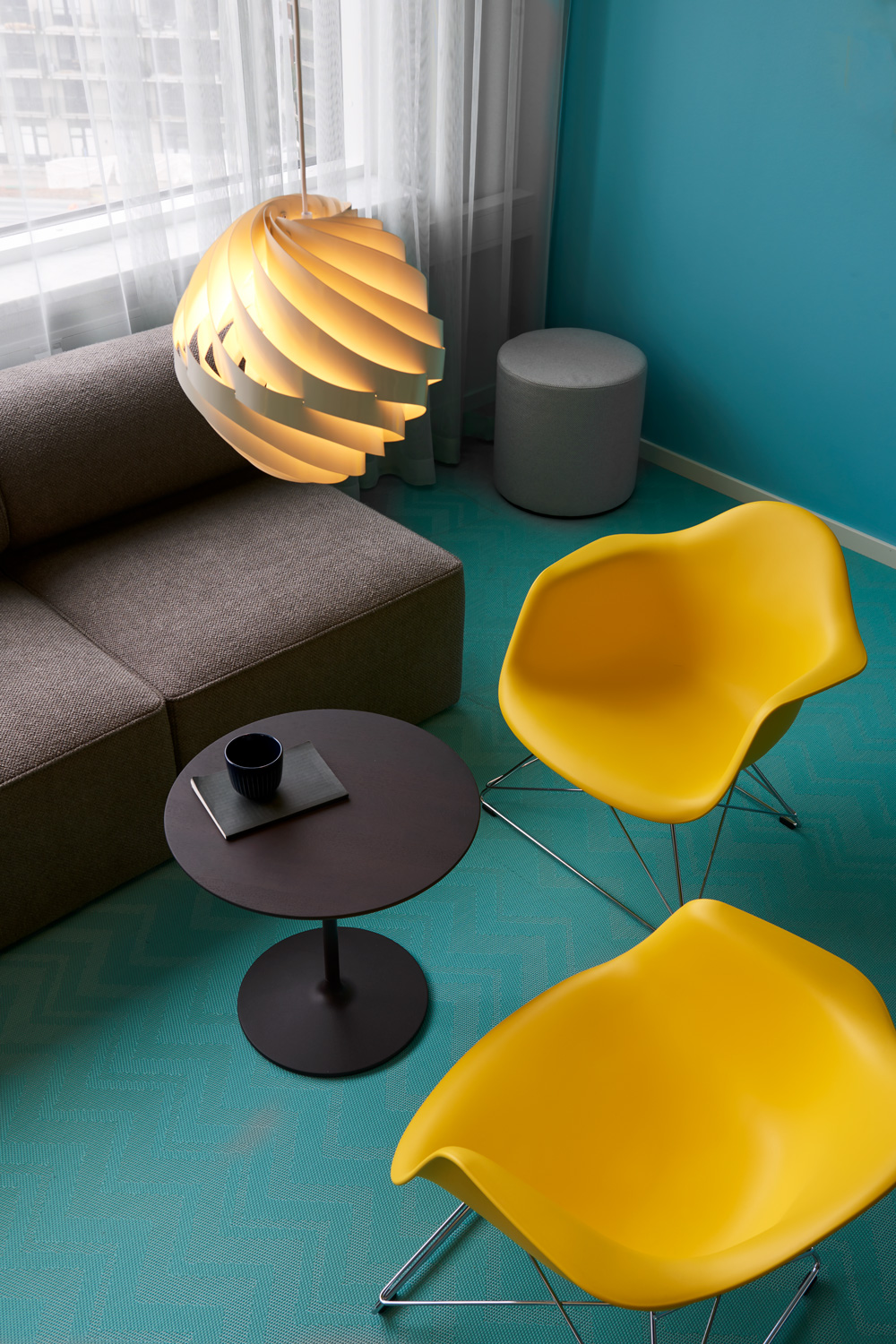
Adapting your office lighting to the rhythm of the day is smart.
06. Adjust for time of day
Adapting your office lighting to the rhythm of the day is smart. By embracing dynamic lighting systems and getting cosy with the idea of natural light patterns. It’s about making your office lighting swing to the tune of our body’s circadian rhythms and the ever-changing dance of natural light. This savvy approach does more than just make everyone comfy; it gives productivity and energy levels a hearty nudge in the right direction.
Imagine a lighting system as dynamic as a summer’s day. In the morning, it brings the zing of cooler, brighter light, waking everyone up and getting them ready for action. As the day rolls on, the lighting takes a chill pill, transitioning to a warmer, softer glow, helping everyone wind down and telling their bodies it’s nearly time to clock off. This clever syncing with our internal clocks isn’t just for show – it can help keep our sleep patterns, moods and overall health in tip-top shape.
These lighting systems are not just one-trick ponies. They can adjust themselves based on the amount of natural light that’s popping in to say hello, keeping the light levels in the office steady and well-balanced. This adaptability is key in places where the sunshine plays a game of peek-a-boo throughout the day.
And let’s not forget about matching the lighting to the task at hand. Bright and peppy light for those brainstorming sessions or collaborative pow-wows, and something a bit more mellow for when it’s heads-down, concentration time.
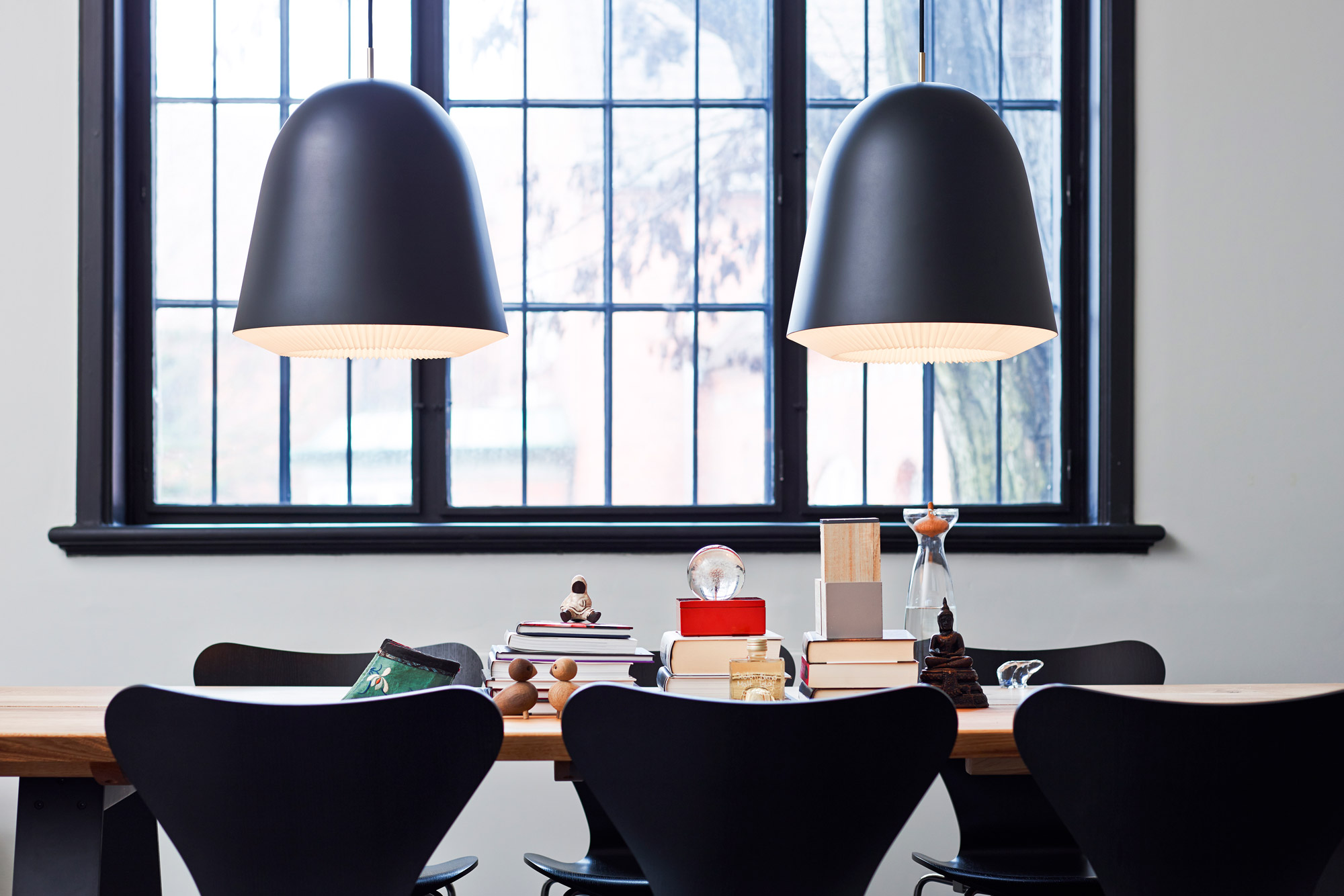
Just like a dodgy office chair can cause backaches, poor lighting is a recipe for eye strain.
07. Illuminate for health and well-being
Lighting in the office is a vital ingredient in the recipe for employee health and well-being. So, what are the key lighting elements to sprinkle in for a workspace that’s a tonic for both mind and body?
First on the menu is the quality of light. Just like a dodgy office chair can cause backaches, poor lighting is a recipe for eye strain, headaches and even those pesky mid-afternoon slumps. Full-spectrum light bulbs are clever little things that are like a slice of daylight, helping reduce eye fatigue and keeping moods and alertness up. Also, let’s give flickering fluorescent lights the boot – they’re the culprits behind many unexplained headaches and migraines.
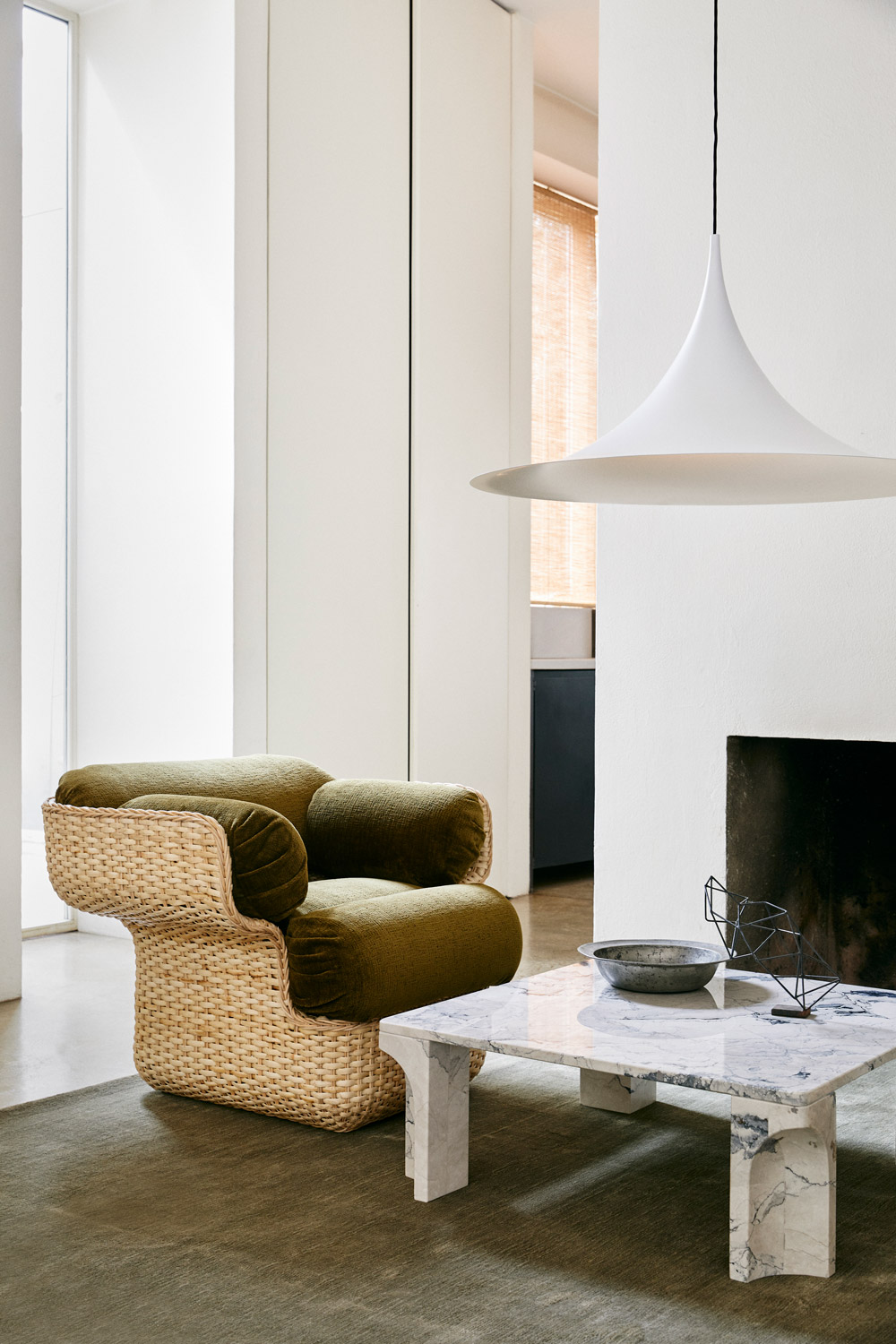
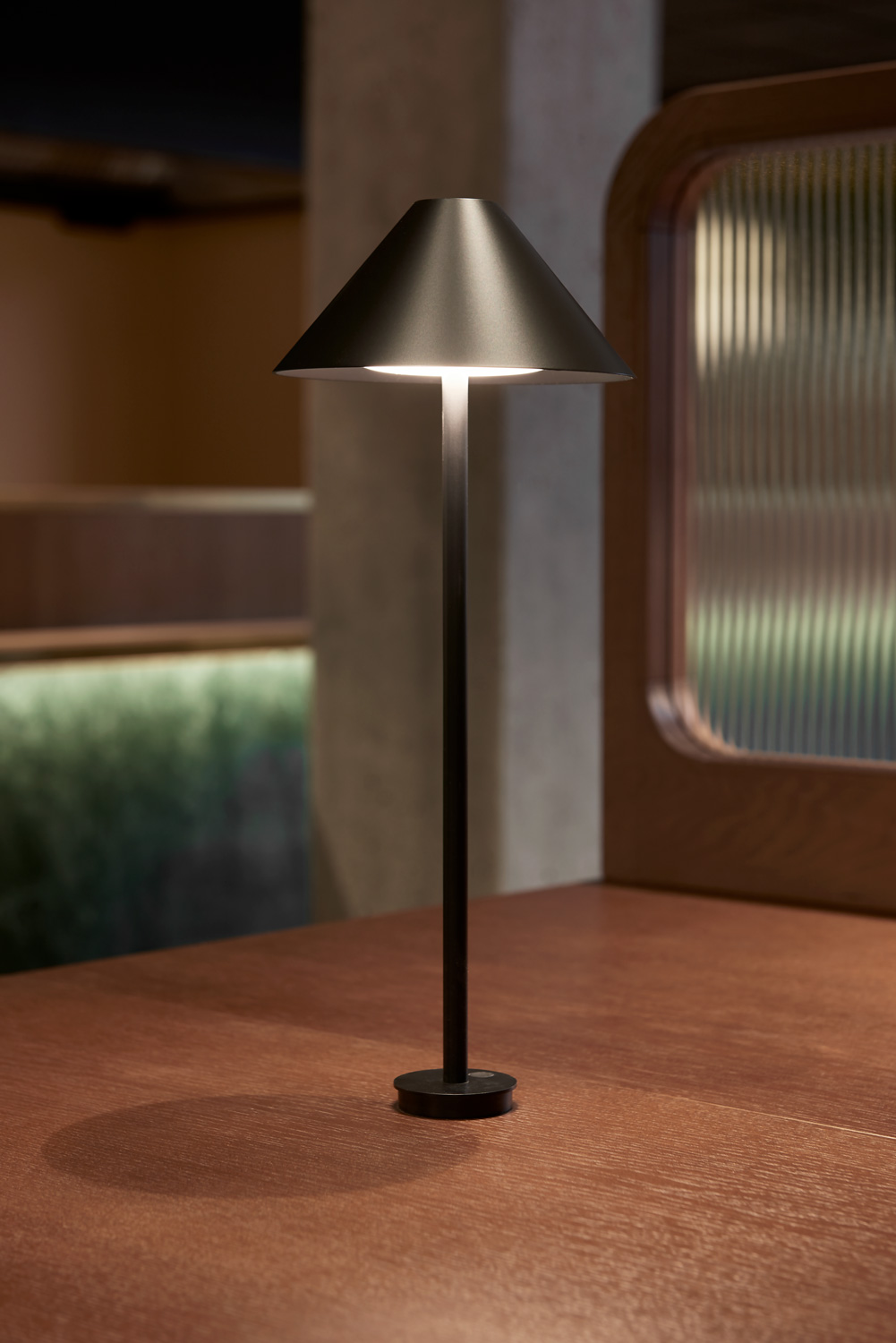
Bright, stimulating lights work wonders here …
08. Customise for different areas
Setting the lighting in different office areas is about giving each part of the office its own lighting personality, tailored to its role and vibe.
In the buzzing hubs of collaboration, like meeting rooms and brainstorming areas, lighting needs to be as lively and energetic as a morning team huddle. Bright, stimulating lights work wonders here, setting the stage for creativity and dynamic discussions. Think adjustable overhead lights – versatile enough to switch from ’bright idea’ mode to ’deep discussion’ tone with just a flick.
Now, let’s move over to the focus zones, the individual workstations. Here, it’s all about task lighting that’s as attentive to detail as a watchmaker. Glare-free, concentrated light from adjustable desk lamps or under-cabinet lighting allows everyone to customise their own little bright spot, making sure their focus stays sharp and their eyes don’t tire.
And for the break areas and lounges, the mood shifts. These spaces call for lighting that’s as soft and welcoming as a favourite armchair, perfect for unwinding or a casual chat. It’s all about creating a relaxed, ’take-a-break’ atmosphere with ambient lighting that says, ’sit down and stay awhile.’
Lighting can also be a bit of a mood magician, especially with the trickery of dimmer switches and colour temperature controls. Warmer tones in the lounges can create a cosy retreat, while cooler tones in the workspaces keep minds alert and ideas flowing.
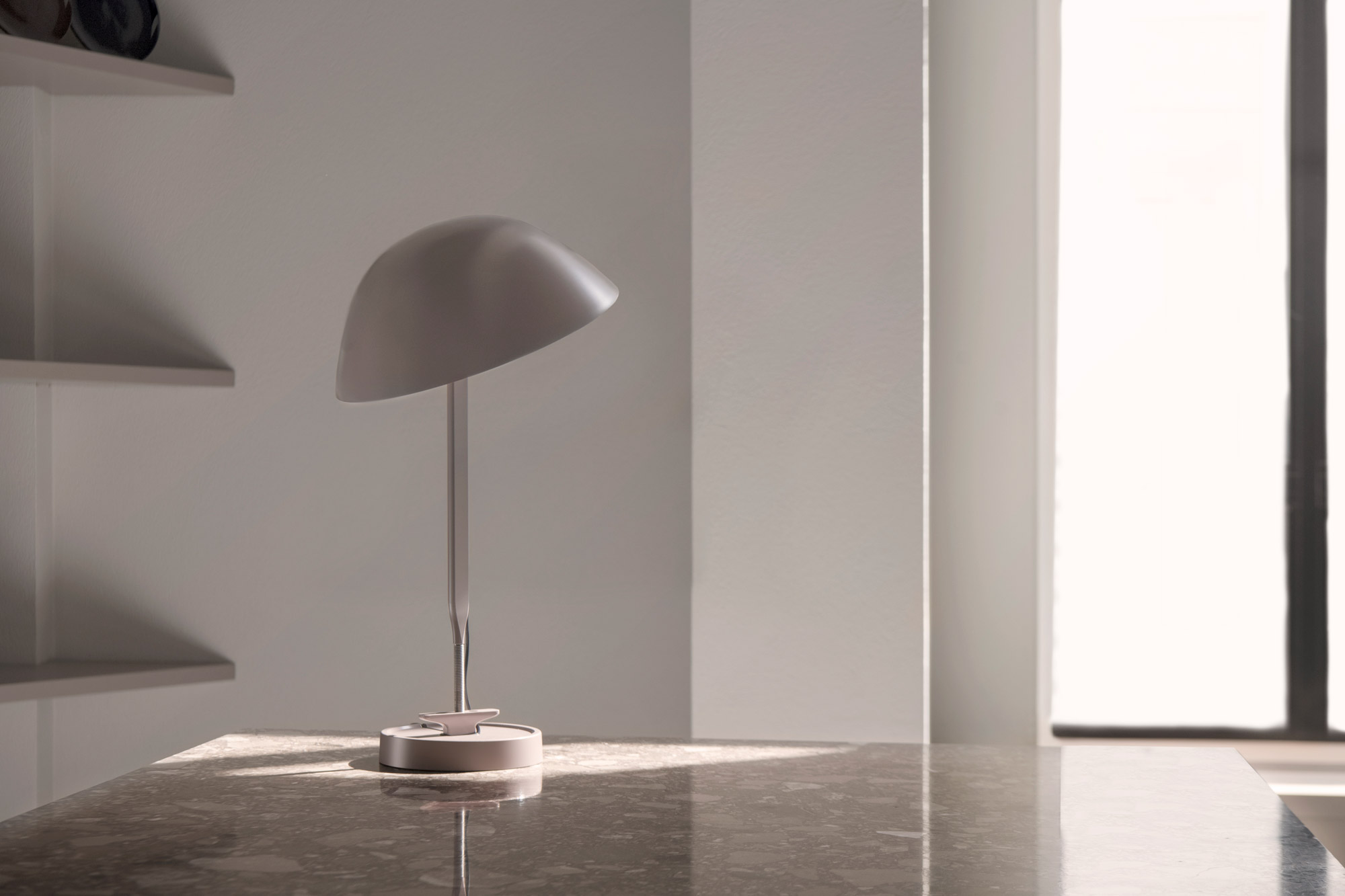
The checklist
Creating the right lighting in an office environment is a multifaceted task that significantly impacts productivity, health and overall ambiance. From understanding the types of lighting – ambient, task and accent – to customising lighting for different office areas, each aspect plays a crucial role in shaping the workspace.
Tailoring lighting solutions to accommodate different times of the day and the specific needs of various zones within the office ensures a comfortable and efficient environment. Keeping in mind the health and well-being of employees is paramount, as lighting directly affects physical comfort and mental state. With this comprehensive guide, you are equipped to transform your office lighting from a mere necessity into a strategic component that enhances work life.
1. Assess current lighting
Observe how natural and artificial light covers the office.
Identify underlit or overly bright areas.
2. Make a lighting plan
Map light placements on a blueprint.
Ensure a mix of ambient, task and accent lighting.
3. Design with ambient lighting
Select fixtures for even general illumination.
Choose bulbs with natural daylight temperatures.
4. Optimise task lighting
Place task lights at workstations for focused activities.
Adjust brightness and positioning as needed.
5. Enhance with accent lighting
Highlight features with spotlights or track lighting.
Adjust the intensity to complement overall design.
6. Adjust for time of day
Incorporate dynamic lighting systems.
Align lighting with circadian rhythms for well-being.
7. Illuminate for health and well-being
Use full-spectrum bulbs to mimic natural light.
Eliminate flicker to prevent eye strain and headaches.
8. Customise for different areas
Tailor lighting to the function of each zone.
Use dimmers and colour controls for flexibility.
Ready to illuminate your office with perfect lighting? Escandi is here to turn these ideas into reality. We’re all about crafting environments that boost creativity and efficiency. Get in touch with us at info@escandi.se, and let’s make your office a place where productivity shines and employees thrive.

